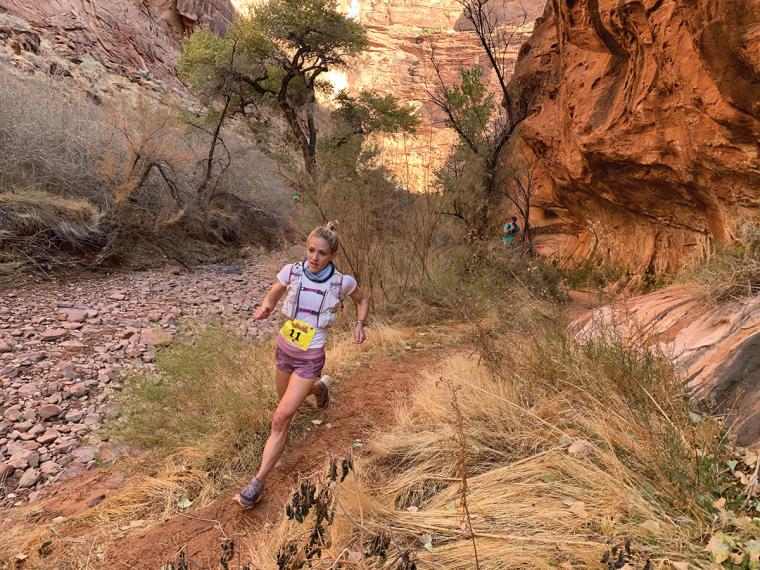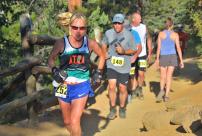With Growth Continuing and Opportunities Ahead, the Sport is Poised for Popularity


The American Trail Running Association (ATRA) was formed to represent and promote trail running mountain running and ultra trail running.
ATRA’s definition of trail runs is fairly broad-based, including not only mountain single-track trails, but also wide dirt paths and any terrain not on paved surfaces. Due to the nature of some mountain races on roads which have significant elevation gain (including Mount Washington Road and Mount Evans highway), this type of course is also promoted through ATRA in the mountain running category.
ATRA is not an event owner but instead provides resources for race directors, athletes and fans of the sport, including a nationwide website listing of trails, as well as trail races so that runners can find ways to participate. In addition, ATRA provides listings of coaches and camps for runners interested in improving their performance. It also offers education for race directors and provides a standards program for those interested in putting on safe and enjoyable events.
The Growth of Trail Running Nationwide
There’s definitely an uptick in people getting outdoors to use and enjoy the trails as a result of the pandemic. People are looking for an outlet and trails fill that need. It’s our hope they will continue to enjoy the trails.
There are two aspects of trail running: training and racing. Of those two, racing demographics are easier to track because you have to register to race and therefore data is captured. Trends in trail running often reflect race stats.
The demographics show us that while there are typically more men in trail running, there are more women in the sport now than when I started in the sport. Something interesting we’re seeing is that organizers of shorter distance races are reporting more of an equal split between men and women and, in some cases, more women.
This isn’t to say women can’t run the longer distances or don’t want to. One of the issues women face is access to childcare during events. It’s hard to sign up for a race that goes on for 24 hours if you are the main person in the family who takes care of the kids. Something we’re glad to see is that events are starting to look at providing quality licensed childcare so women can race.
Dynamics of Trail Race Events
The “Get Out/Spread Out” philosophy of the Trails and Open Space Coalition encourages people to get a workout in a healthy, low-risk environment; obviously, that has helped the sport grow. There have also been virtual races and many people chose to participate in those on trails, often whether or not the race specified it.
We’re starting to see in-person races happening again, and that is another good indicator. Trail racing has historically had smaller fields than traditional road racing. There is often limited parking at trailheads where races are staged, in the hopes of providing a better experience like less crowding on the trails. This has led to a smaller group of people in trail running as a whole.
As live races resume, we’re seeing new precautions being taken. Often, there is an open starting line or race directors are releasing runners two at a time every five seconds to maintain social distancing. That, plus the smaller numbers of people in races, keeps the risk lower than mass start events.
For people who want to run on their own schedule, there are plenty of virtual races out there and event owners will most likely continue to offer them, or a hybrid version, in the future. However, it’s obvious people miss live racing and the interaction with others.
More Events
Spartan added trail racing events to their portfolio a few years ago. It has turned out to be very beneficial to them because it brought in lots of new people – not just traditional OCR racers but runners who enjoyed a new challenge. The Spartan engine is enormous – it has a worldwide span, and as a result of their events, more people have been introduced to trail running. The OCR side of their business is not going away but the trail racing has been a great addition.
The Nation’s Trail Supply
Whether or not we need more trails in the United States is a good question. In some regions where there are no parks or trails, there is a definite need, but it’s not always feasible to create new trail networks. Where trails exist, it’s of the utmost importance to take care of them first, before considering building more.
The pandemic has led to trails getting more use – but unfortunately, this often causes more wear and tear. Cities were faced with budget shortfalls which led to fewer workers, and it is hard for the remaining staff to keep up with trail maintenance. We try to promote the idea of trail runners giving back to help keep trails in shape, and we’re actually starting to see an increase in plogging – the practice of picking up litter while out running. Runners will carry bags and fill them as they go, and at the conclusion of their run, will put the filled bag in a trash can or recycle bin, depending on what is collected. On the “Explore” tab of our website is a section on trail maintenance organizations and opportunities. Sustainability is the key to our sport and we all have to do our part.
Opportunities for Runners and Race Directors
In October, ATRA partnered with Active At Altitude to host the US Trail Running Conference in Fayetteville, Arkansas. For the first time, we were able to hold the event in a hybrid format, with registration available for both in-person and virtual attendance. We didn’t have huge numbers for the in-person side of the meeting, which made it easy to manage. Everyone wore masks, including the presenters, and the meeting area was well-ventilated, with chairs spaced far apart to accommodate social distancing.
We learned a lot from hosting the event. The first was that people obviously missed the one-on-one interaction they traditionally got from meetings. The second was that the hybrid format was an advantage because it opened up the meeting to a lot of people who might not have been able to travel because of the expense involved.
Fayetteville was an excellent host venue. It is a great town with a fun vibe and almost everything is within walking distance. We had casual runs every day, so we were able to explore the parks – the city has a nice network of trails. The catering service we used was sustainable, with organic waste recycling. All in all, the meeting was a success – we’re going back to Fayetteville for the 9th Conference from October 27-30, 2021.
Trail Running in the Olympics?
As trail runners, we would love to see our sport in the Olympics but it’s not there yet. There are a lot of criteria that need to be met, and it would most likely have to be included as a demonstration or exhibition sport first.
However, there are opportunities for elite runners who want to compete on the international stage. The World Mountain and Trail Running Championship will be held in November 2021, and there are plenty of very competitive events domestically as well. People can start competing when they are young and move up to the masters level as they age.
Changing Demographics
We’re starting to see more diversity on the trails. This is really important to us because if someone is trying to find a way to work out and the only people they see at events, or in advertising for events, are people who don’t look like them, it makes it harder to convince them to get involved. At ATRA, we’re very determined to make our sport feel welcoming to everyone. It has been our experience that once people try trail running, they find that the trail community embraces them. It’s great when people participate in the sport and say, “Hey, this is for me.” SDM

